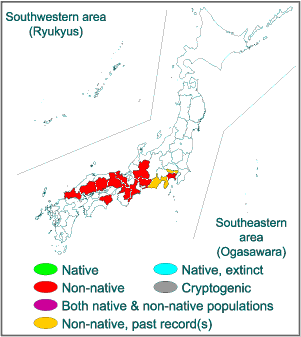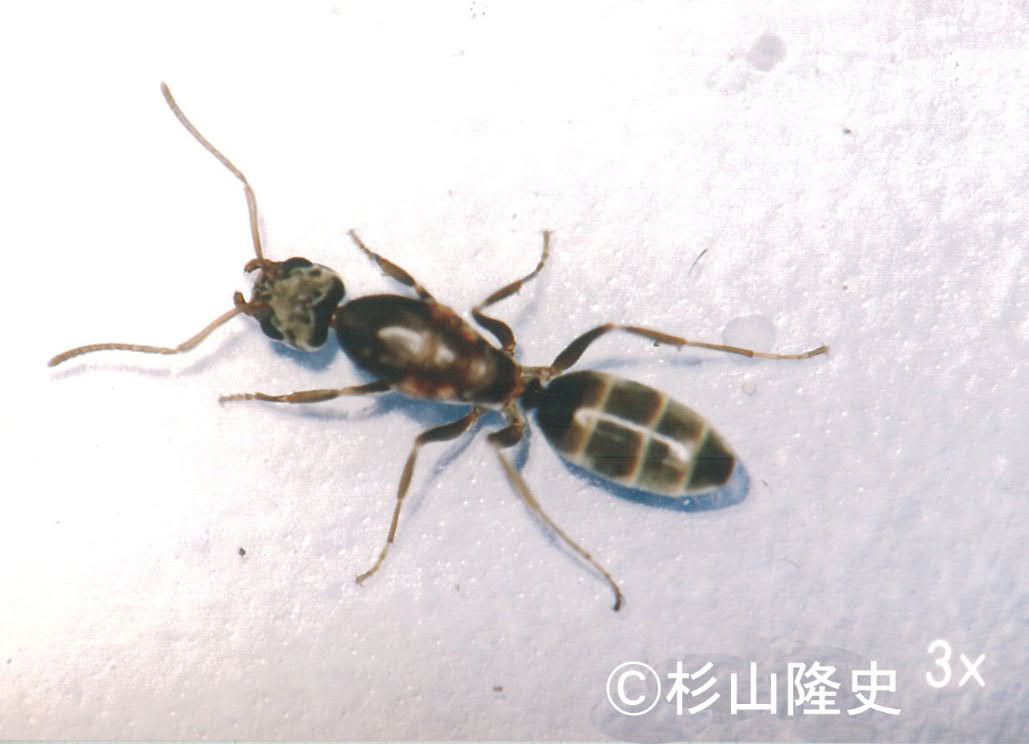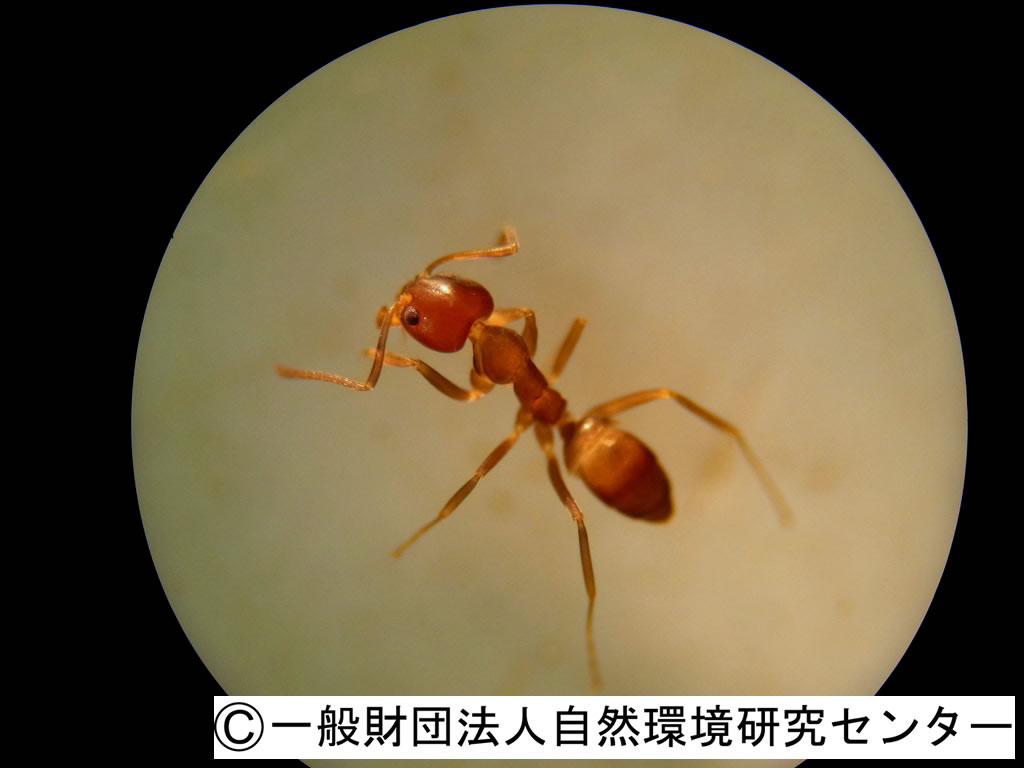| Invasion information |
| Range in Japan |
Tokyo (declared eradication in 2021), Kanagawa, Shizuoka (declared eradication in 2019), Aichi, Gifu, Mie, Nara, Kyoto, Osaka, Hyogo, Okayama, Hiroshima, Yamaguchi, and Tokushima Prefs. |

|
| Origin |
Unknown. |
| Date |
1993 |
| Route |
Accidental introduction (with building material, with some kind of transport, with some vector). |
| Impact |
Pest for agriculture and human life.
Native organism(s) affected: Insects. |
| Regulation in Japan |
Import, transport and keeping in Japan are prohibited by the Invasive Alien Species Act. |
| Introduced range in other countries |
Europe (France, Italy, Portugal, Spain, UK, Switzerland, etc.), Atlantic Islands (Azores, etc.), UAE, South Africa, Bermuda, USA (mainland, Hawaii), Mexico, Chile, Peru, Australia, New Zealand. |
| Reference |
Notes |
- Ecol Soc Japan (ed) (2002) Handbook of Alien Species in Japan. Chijin-Shokan. (in Jpn)
- Global Invasive Species Database http://www.issg.org/database
- New South Wales Department of Agriculture (1977) New South Wales Department of Agriculture Entomology Branch Insect Pest Bulletin 111.
- Ôhara & Yamada (2012) A new distributional record of Linepithema humile (Mayr, 1868) (Hymenoptera, Formicidae) from Tokushima City, Shikoku, Japan. Bull Tokushima Pref Mus. 22, 57-62 (in Jpn)
- Roura-Pascual et al. (2006) Niche differentiation and fine-scale projections for Argentine ants based on remotely sensed data. Ecol Appl. 16(5):1832-1841
- Sugiyama (2000) Invasion of Algentine ant, Linepithema humile, into Hiroshima Prefecture, Japan. Jpn J Appl Entomol Zool. 44(2):127-129
- Thompson (1990). Ants that have pest status in the United States. In R. K. Vander Meer, K. Jaffe and A. Cedeno (eds.) Applied Myrmecology - A World Prespective. pp. 51-67. Westview Press, Boulder.
- Tsutsui & Suarez (2003) The Colony structure and Population Biology of Invasive Ants. Conserv Biol. 17:48-58
- Unpublished distribution data by National Institute for Environmental Studies
- etc.
|
100 of the World's Worst Invasive Alien Species. 100 of the Japan's Worst Invasive Alien Species.
From 2011, established population have been controlled according to the National Institute for Environmental Studies manual.
In 2014, popuation in Oota-ku, Tokyo were declared eradication.
In 2019, popuation in Shizuoka-city, Shizuoka were declared eradication.
|

 Japanese |
English
Japanese |
English

